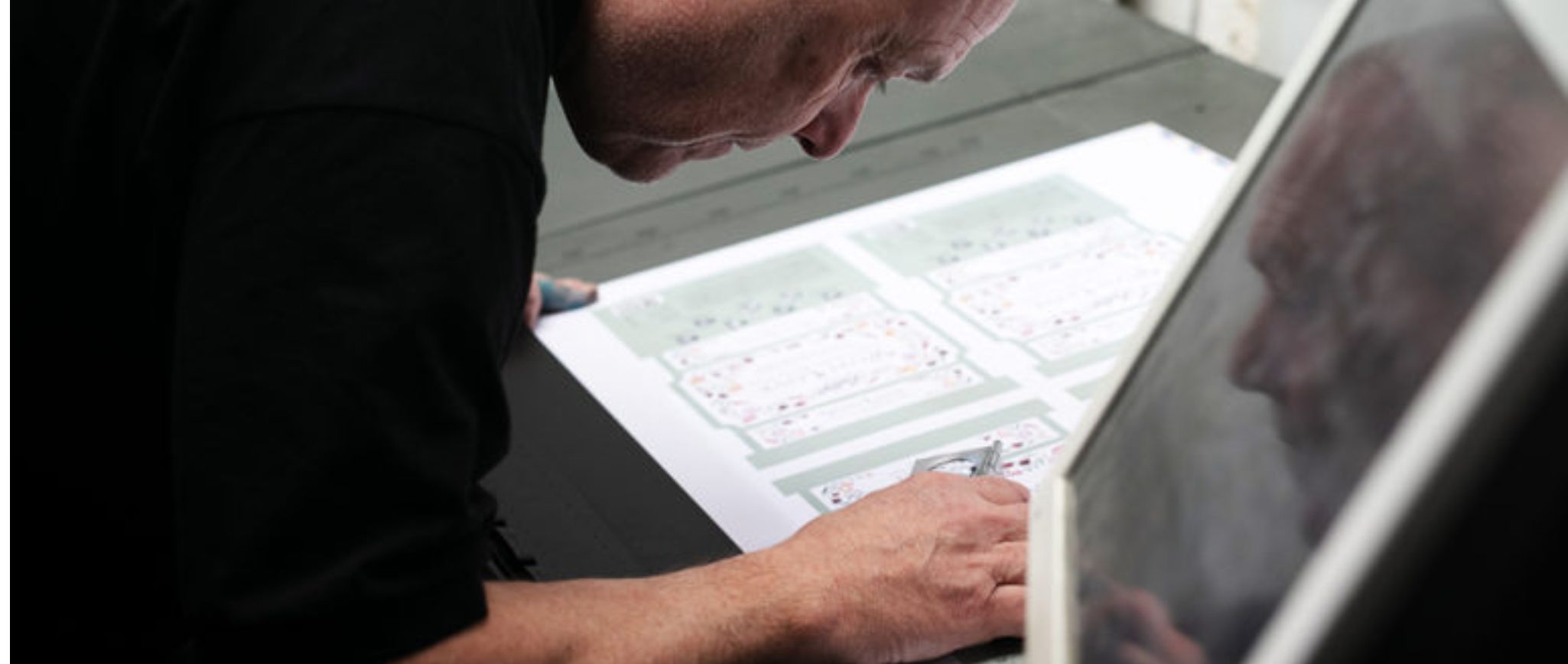
What Does “Print-Ready Artwork” Really Mean?
Print-ready artwork refers to digital files that meet every technical specification required by commercial printers. These files must have the correct file type, resolution, colour format, and dimensions, all meticulously set so the print runs perfectly straight off the press.
When artwork isn’t print-ready, even the most beautiful design can fall flat, pixelated images, skewed colours, missing fonts, or misaligned trims. Where possible we catch these problems with our pre-print production checks, sparing you from avoidable delays or reprints.
Though we’re flexible in what we print, our prepress process keeps the bar high. We’ve honed our guidelines so that only artwork meeting our standards makes it to the press, ensuring the final product reflects the best of your vision.
How We Define Print-Ready Artwork
At the heart of our process are a few core principles:
- Correct File Format & Software
We favour page makeup software like Adobe, InDesign, Illustrator, or packaged PDFs. These formats retain sharpness and scalability, unlike bitmap files from Photoshop, which can become pixelated at print size - Colour Prepped for Print – Always CMYK
Digital screens use RGB, but presses use CMYK. We require files to be pre-converted to CMYK so what you see is what you get—no unexpected colour shifts during printing. - Resolution You Can Trust
For impeccable clarity, we ask for images at least 300 dpi. That ensures sharp detail and avoids the blotchy, blurry look of low resolution. - Bleed and Trim Defined Correctly
Without a proper bleed, typically 3 mm, trimming can reveal white gaps at the edge. We insist on bleed plus clear trim marks so your artwork prints flush to the edge. - Fonts Embedded or Outlined
Missing fonts can break layouts or substitute incorrectly. That’s why we require fonts to be either embedded or converted to outlines, ensuring consistency and avoiding surprises. - Flattened, Job-Specific PDFs
To preserve integrity and avoid errors, we ask for flattened PDFs (especially from InDesign) and separate files per job, no mixed batches, so what we get is exactly what you intended.
- Cutter guides
Artwork that requires cuts or creases (e.g. a folder) should have a spot colour on the artwork so it can be easily separated from the print.
Why Print-Ready Artwork Matters to You
Preparing your artwork to our print-ready standards pays off in reliability and quality. You’re not just avoiding errors, you’re ensuring your final printed materials look exactly as envisioned, on time and on budget.
We care deeply about print excellence and sustainability, so we’ve developed robust workflows and tools to help bring your designs to life, without surprises. When you supply artwork that’s print-ready, it’s a win for everyone: clarity, speed, quality, and peace of mind.
Ready to make your next project flawless on the press? Reach out if you’d like help reviewing your files or learning more about our print-ready standards, we’re here to help every step of the way.
Quick check artwork checklist
File Format & Software
- Use vector-based software (Adobe InDesign, Illustrator) or packaged PDFs
- Avoid bitmap-only files (Photoshop) unless high-resolution
Colour Setup
- Convert all artwork to CMYK (not RGB)
- Double-check colours for accuracy before sending
Resolution
- Ensure images are minimum 300 dpi at final print size
Bleed & Trim
- Add 3mm bleed on all sides
- Include clear trim/crop marks
Fonts
- Embed fonts in the PDF
- Or convert all text to outlines
PDF Preparation
- Export as flattened PDF
- Supply one file per job (no mixed artwork)

